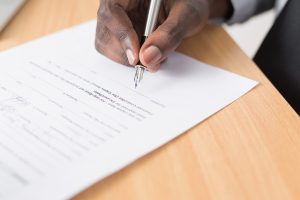When looking to rent a home, considerable attention must be given to the details. A long list of questions must be answered by the renter and the landlord. When you and your landlord are in agreement and your rental contract is signed, moving in is the next stage.
First and foremost, make sure the rental property has been visited before signing any lease or rental agreement. Before your moving van arrives, arrange to do a Move In inspection with your landlord, preferably during the day to insure you don’t miss anything. Have a Rental Inspection Checklist with you in case your landlord does not. There are some online sample lists available that contain comprehensive points to consider. Doing an inspection BEFORE you move in and BEFORE you move out is an important form of protection for both you and your landlord.
A very clear picture of the condition of your rental property, both before moving in or moving out should include:
- Condition of the walls (marks or damage)
- Condition of the flooring (carpet clean and in good repair)
- Are all lights and plugs working?
- Do the fixtures work? Flush the toilet, run the shower/bath, run the taps at the sinks
- Make sure all included appliances work. Turn on and test both the elements on the stove and the oven. Is the fridge and freezer cold? If there are washer dryer included, test them out as well.
Taking dated pictures of all of these areas upon move in adds a level of protection and can be essential to solving any disputes about existing damage vs. Damage caused during your tenancy.
These are a general overview of the top items, and each property will vary, so have a Rental Inspection Checklist with you. Often forgotten is inspecting the parking area if this is included with your rental. Go to the parking area or garage; ensure it is properly lighted and maintained. This is a safety concern to be taken seriously. Note any deficiencies on the Checklist and be sure that you make your landlord aware of perceived issues before you sign anything.
The Checklist should be signed by both you, the renter, and your landlord. Each party should maintain a copy for their records and have them available for move out day.
During your rental period, keep a record of any and all repairs done. This includes any repairs the landlord does, and ones you may have undertaken at your own expense. Agree on the condition of the property AFTER the repairs are done.
At first glance, doing inspections before you sign a lease, before you move in, and before you move out may seem like a lot of effort, but they are for the protection and safety of both you and your landlord. You want to be fully confident that your rental is safe, in good condition, and will function for you and your family. Moving in without knowing that your appliances and fixtures work, or if the house is in immediate need of repairs, will cost you money if you don’t take note of these issues prior to signing a lease.
Your landlord will want an inspection for their own protection as well. The property is their investment. As owner and landlord of the property, they have a legal responsibility to you, the renter, to keep the property maintained. A landlord is entitled to inspect the property after giving proper notice of 24 hours to the renter. Your landlord has the right to know the property is being used in the agreed manner, and can cash in a damage deposit to fix things if they feel it is necessary.
More resources on these and other topics can be found at rentfaster.ca Helpful Links, and other blogs.







